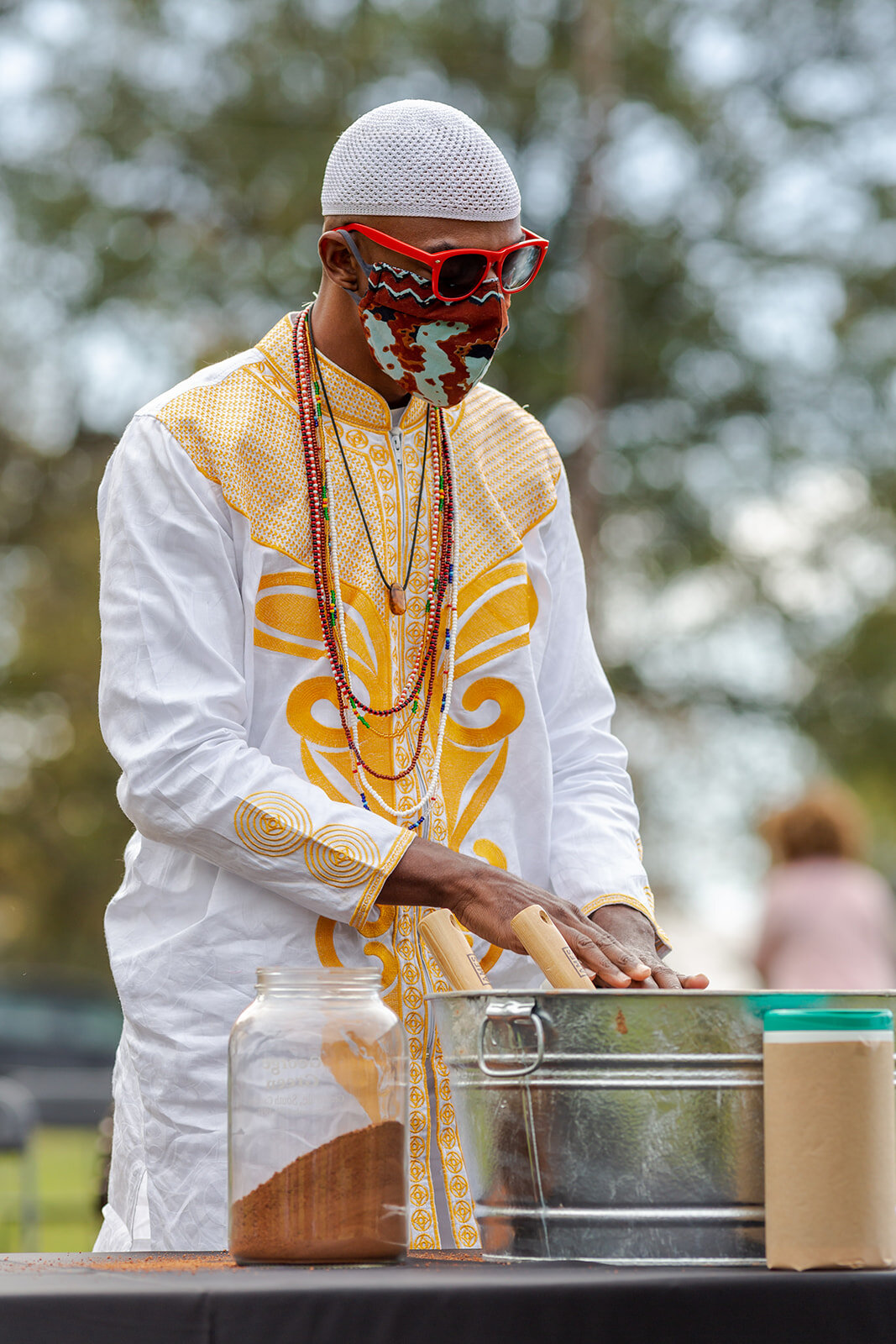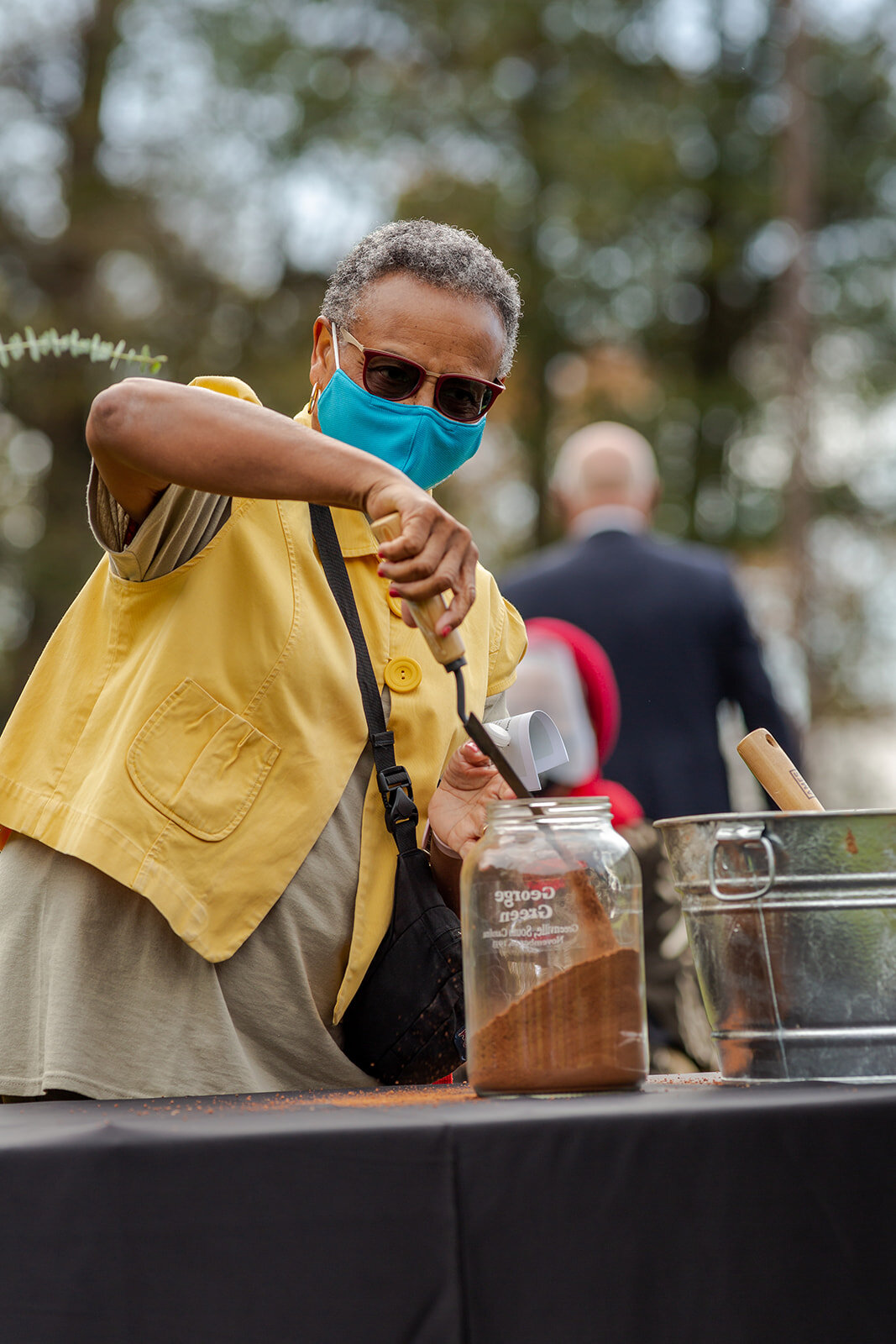
George Green
-
Say His Name: George Green
George Green (1860-1933) lived in Taylors, South Carolina.
According to local news accounts, Mr. Green had a disagreement with his white landlord, C.F. James, who enlisted local members of the Ku Klux Klan to do “whatever was necessary” to remove Mr. Green from the property.
On the evening of November 16, 1933, a mob of nearly a dozen white men forced their way into Mr. Green’s home, where he lived with his wife, Mary. Although Mr. Green tried to defend Mary and himself, he was overpowered and shot several times. No one was ever convicted or legally punished for George Green’s murder.
On November 7th, 2020, a Soil Collection Ceremony was conducted for George Green, a victim of a racial terror lynching that took place in Taylors, South Carolina on November 16th, 1933.
The ceremony took place outdoors in a grassy field near the location where Mr. Green died.
For their participation in the ceremony, the Leadership Team of the Community Remembrance Project of Greenville County, SC sincerely thanks: Mr. Sammy Dotson; Rev. Tony McDade; Dr. Feliccia Smith; Mrs. Maxine Moragne; Pastor Curtis Johnson; Pastor Sean Dogan; Mr. Brendan Payne; Ms. Barbara Brown; Councilman Ennis Fant; and Councilwoman Lillian Brock-Flemming.
We are also very grateful to DeVon Hawthorne, who made the video of the service possible for us to share with everyone.
Pictured above: Ceremonial jars of soil, honoring George Green, were collected to be permanently displayed at the National Memorial for Peace and Justice in Montgomery, Alabama and a location in Greenville County.
(Photo by Jeanette Brewster)
-
Watch the ceremony HERE
<https://www.youtube.com/watch?v=H1g-5-0njvo>
-
Watch the ceremony HERE
On November 14, 2019, the Community Remembrance Project of Greenville County conducted its first community awareness event about George Green.
The event, held at Long Branch Baptist Church, included historical information about lynching and its connection to Greenville’s modern-day issues of gentrification and lack of affordable housing. Nearly 400 audience members also participated in small-group reflection and dialogue.
This was the first in a series of events that are intended to confront the legacy of racial terror lynchings in Greenville County and to begin the process of restorative truth-telling and racial healing.
-
Please view the Historical Marker Event on Youtube HERE.
-
George Green’s Historical Marker can be found HERE.
It is located in Taylors in front of the Summary Court at 320 W. Main Street Taylors, SC 29687.
Photos from George Green’s Soil Collection Ceremony and Community Awareness Event




















